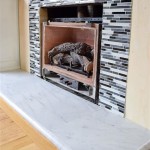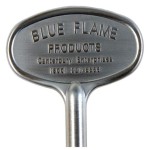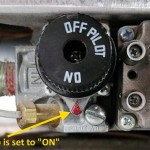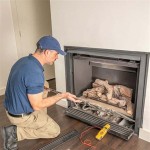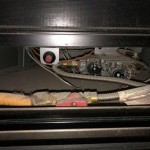How To Install a Wood Fireplace Mantel
A wood fireplace mantel serves as a focal point in a living space, adding character, warmth, and architectural detail. Installing a wood mantel is a manageable project for a homeowner with basic carpentry skills and the right tools. Careful planning, precise measurements, and adherence to safety guidelines are crucial for a successful and aesthetically pleasing installation. This article provides a comprehensive guide to installing a wood fireplace mantel, covering considerations, tools, and a step-by-step process.
Before commencing the installation, several factors must be considered. These considerations pertain to fireplace codes, mantel dimensions and weight, safety precautions, and the appropriate mounting method.
Key Considerations Before Installation
Fireplace Code and Safety Regulations: Local building codes dictate the permissible proximity of combustible materials, like wood, to the fireplace opening. These codes are designed to prevent fire hazards. The National Fire Protection Association (NFPA) provides guidelines on safe clearances. Generally, the higher the mantel above the firebox, the closer it can be to the opening. Consult local building codes or a qualified building inspector to determine specific requirements for the particular fireplace and location. Failure to comply with these regulations can lead to hazardous conditions and potential property damage.
Mantel Dimensions and Weight: The dimensions of the mantel should be proportional to the fireplace and the surrounding room. A mantel that is too large can overwhelm the space, while one that is too small may appear insignificant. Measure the width and height of the fireplace and the available wall space to determine the appropriate mantel size. Additionally, consider the weight of the mantel. Heavier mantels require more robust support structures. Determine the weight of the mantel to select appropriate mounting hardware and ensure the wall structure can handle the load. Solid wood mantels, particularly those crafted from dense hardwoods, can be significantly heavier than hollow or manufactured alternatives.
Mounting Method: Several mounting methods are available, each suited to different wall constructions and mantel weights. The most common methods include using corbels, Z-clips, or a French cleat system. Corbels are decorative brackets that provide both visual appeal and structural support. They are typically used for lighter mantels. Z-clips consist of two interlocking metal pieces, one attached to the mantel and the other to the wall. This method creates a secure and concealed mounting. A French cleat is a simple and strong method that uses two beveled pieces of wood, one attached to the mantel and the other to the wall, that interlock. The choice of mounting method will depend on the mantel's weight, the wall's construction (e.g., drywall, brick, stone), and the desired aesthetic.
Tools and Materials Required
Gathering the necessary tools and materials before starting the installation will streamline the process and prevent delays. The following is a comprehensive list of essential items:
Measuring Tools: A tape measure, level (both a standard level and a torpedo level are recommended), stud finder, and pencil are essential for accurate measurements and marking. A laser level can be helpful for ensuring the mantel is perfectly horizontal, especially for longer mantels.
Drilling and Fastening Tools: A power drill with various drill bits (including masonry bits if installing into brick or stone), a screwdriver (both manual and powered), and appropriate screws or fasteners are necessary for attaching the mantel to the wall. Consider using construction adhesive in conjunction with screws for added stability, especially for heavier mantels.
Cutting Tools: A saw (either a hand saw or a power saw such as a miter saw or circular saw) may be required to trim the mantel or corbels to the desired size. A utility knife is useful for scoring drywall or cutting shims.
Safety Equipment: Safety glasses, work gloves, and a dust mask are essential for protecting eyes, hands, and lungs during the installation process. Hearing protection is also recommended when using power tools.
Mounting Hardware: Select appropriate mounting hardware based on the chosen mounting method and the mantel's weight. This may include corbels, Z-clips, French cleat material, screws, anchors, and construction adhesive.
Shims: Shims are thin pieces of wood used to ensure the mantel is level and flush against the wall, particularly if the wall is uneven.
Sanding and Finishing Supplies (Optional): If the mantel requires sanding or finishing, gather sandpaper, wood stain or paint, polyurethane or other sealant, brushes, and rags.
Step-by-Step Installation Process
The installation process can be broken down into the following steps:
1. Preparing the Wall: The first step involves locating wall studs using a stud finder. Mark the stud locations with a pencil. If installing into brick or stone, use a masonry bit to drill pilot holes. The wall surface must be clean and free of dust or debris. If there are existing wall hangings or decorative elements in the installation area, remove them carefully.
2. Determining Mantel Placement: Decide on the desired height of the mantel. This height is often determined by the fireplace opening's dimensions and the overall aesthetic of the room. Use a level and pencil to mark a horizontal line on the wall at the desired height. This line will serve as a reference for positioning the mantel. Ensure the line is straight and level across the entire span of the mantel.
3. Installing Mounting Hardware (Corbels): If using corbels, position them symmetrically beneath the marked line, ensuring they are spaced appropriately to support the mantel's weight. Use screws to attach the corbels to the wall studs, drilling pilot holes first to prevent the wood from splitting. For brick or stone walls, use masonry screws and anchors. The corbels should be securely fastened to the wall to provide adequate support.
4. Installing Mounting Hardware (Z-Clips or French Cleat): For Z-clips or a French cleat system, attach one half of the hardware to the back of the mantel and the other half to the wall, following the manufacturer's instructions. Ensure the hardware is aligned correctly so that the two pieces interlock securely. Use screws of appropriate length and strength to attach the hardware to both the mantel and the wall.
5. Mounting the Mantel: With the mounting hardware properly installed, carefully lift the mantel and position it onto the corbels or interlocking clips. If using corbels, ensure the mantel sits securely on top of the corbels. If using Z-clips or a French cleat, slide the mantel into place until the clips lock together. Use a level to check that the mantel is perfectly horizontal. If necessary, use shims to adjust the mantel's position and ensure it is level and flush against the wall.
6. Securing the Mantel: Once the mantel is in the desired position, secure it to the mounting hardware using screws or construction adhesive. For corbels, drive screws through the mantel and into the corbels from the top, ensuring the screws are countersunk to prevent them from protruding. For Z-clips or a French cleat, the interlocking mechanism typically provides sufficient security, but additional screws may be added for extra stability. Apply construction adhesive sparingly to the back of the mantel where it contacts the wall to further secure it in place.
7. Finishing Touches: After the mantel is securely mounted, inspect it for any gaps or imperfections. Use wood filler to fill any screw holes or gaps, and sand the filler smooth. If desired, apply a wood stain or paint to match the existing décor. Finish with a coat of polyurethane or other sealant to protect the wood from moisture and wear. Clean the surrounding area and remove any debris.
8. Addressing Incompatibilities: If the wall has uneven surface such as brick or stone, be extra diligent on using the shims to get the mantel level. Use a laser level to project a vertical line on top of the mantel, to make sure that it is even and the gap is consistent.
9. Securing to Stone or Brick: Masonry walls require special preparation. Use a hammer drill to create pilot holes for the screws, and pre-hammer the plastic anchors into the holes until they are flush with the wall surface. Use stainless steel screws for protection against corrosion.
10. Securing Heavy Mantels: Heavy mantels require a much more robust supporting structure. If you determine that the wall studs are not sufficient for the mantel to be mounted, install a header or a ledger to distribute the weight evenly. A header is a horizontal beam that spans the wall studs, providing a solid backing for the mantel support. A ledger is a piece of wood that is attached to the wall studs, creating a shelf for the mantel to rest on.
Addressing Potential Challenges
Mantel installation can present certain challenges. Addressing these challenges proactively ensures a smoother and more successful outcome.
Uneven Walls: Uneven walls are a common issue, particularly in older homes. Use shims to compensate for any unevenness and ensure the mantel is level and flush against the wall. Apply construction adhesive to the shims to prevent them from shifting over time.
Locating Studs: Accurately locating wall studs is crucial for secure mounting. If a stud finder is unreliable, try tapping on the wall to listen for a solid sound, which indicates the presence of a stud. Alternatively, drill small pilot holes along the intended mounting line until a stud is found. Avoid over-drilling, as this can damage the wall.
Concealing Wires: If there are electrical wires running behind the mantel, ensure they are properly insulated and rerouted if necessary to prevent damage or electrical hazards. Consult a qualified electrician if you are unsure how to handle electrical wiring safely.
Mantel Too Long: If the mantel is too long, use a miter saw to cut it to the desired length. Measure and mark the cut line carefully, and use a sharp blade to ensure a clean, precise cut. Sand the cut edge to remove any splinters or burrs.
Mantel Too Heavy: Heavy mantels require additional support. Consider using a combination of mounting methods, such as corbels and Z-clips, to distribute the weight evenly. Consult a structural engineer or experienced carpenter to determine the appropriate support structure for particularly heavy mantels.

Fireplace Mantel Installation Tips How To Antique Woodworks

Fireplace Mantels Installation Care Redwood Burl Inc

How To Install A Fireplace Mantel 14 Steps With S

Fireplace Mantel Installation Tips

Fireplace Mantels Installation Care Redwood Burl Inc

Fireplace Mantel Installation Before And After

How To Install Decorate Wood Fireplace Mantels

How To Install A Floating Mantle The Easy Way In Just One Afternoon

How To Install Decorate Wood Fireplace Mantels

Fireplace Mantel Installation Before And After


